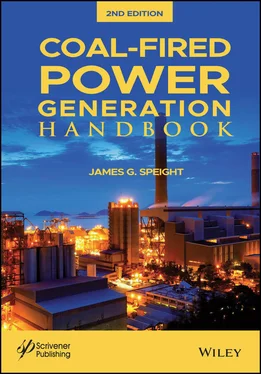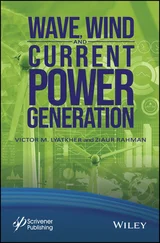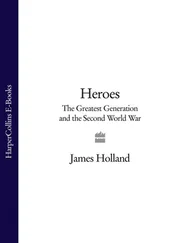Coal is the most abundant and widely distributed fossil fuel in the world and possibly the least understood in terms of its importance to the world economy. Currently, approximately five billion tons are mined in more than 40 countries. Coal provinces (clustering of deposits in one area) occur in regional sedimentary structures referred to as coal basins . More than 2,000 sedimentary, coal-bearing basins have been identified worldwide but less than a dozen contain reserves of more than 200 billion tons.
Although the majority of mined coal continues to be consumed within the country of production, the value of traded coal is increasing. The United States and Australia account for approximately 50% of world coal exports. This figure increases to 70% if exports from South Africa and Indonesia are included. Japan is the largest recipient of exported coal – approximately 25% of the world coal trade – and as such, agreements with coal suppliers and Japan can have a great influence the world coal price. Japan, Taiwan, and South Korea together import approximately 45% of all coal exports and countries of the European Union account for another 30% of total coal exports.
Coal is burned to produce energy – in the United States, coal still accounts for over 50% of the domestic electricity generating industry requirements, all from domestic production. The European Union, on the other hand, must import approximately 50% of its energy requirements (in the form of oil, gas, uranium, and coal).
Production of coal is both by underground and open pit mining (Speight, 2013). Surface, large-scale coal operations are a relatively recent development, commencing as late as the 1970s. Underground mining of coal seams presents many of the same problems as mining of other bedded mineral deposits, together with some problems unique to coal. Current general mining practices include coal seams that are contained in beds thicker than 27 inches and at depths less than 1,000 feet. Approximately 90% of all known coal seams fall outside of these dimensions and are, therefore, not presently economical to mine. Present coal mine technology in the United States, for instance, has only 220 billion tons (220 x 10 9tons) of measured proven recoverable reserves out of an estimated total resource of three to six trillion tons (3 to 6 x 10 12tons) tons.
Problems specific to coal mining include the fact that coal seams typically to occur within sedimentary structures of relatively moderate to low strengths. The control of these host rocks surrounding the coal seams makes excavation in underground mining a much more formidable task than that in hard, igneous rocks in many metal mines. Another problem is that coal beds can be relatively flat-lying, resulting in workings that extend a long distance from the shaft or adit portal (an almost horizontal entrance to mine). Haulage of large tonnages of coal over considerable distance, sometimes miles, is expensive.
Coal, being largely composed of carbonaceous material can also catch fire, in some cases spontaneously (Speight, 2013). Coal, for the miner, has not been an attractive occupation. Interestingly though, the problem of methane, may in the future become a profitable by-product from closed coals mines. Many countries are reported to millions of cubic feet of coal bed methane trapped in abandoned coal mines.
As coal contains both organic and inorganic components, run-of-mine coal contains both these components in varying amounts. In many instances coal beneficiation is required to reduce the inorganic matter (ash) so that a consistent product can be more easily marketed. Most coal beneficiation consists of crushing in order to separate out some of the higher ash content, or washing that exploits the difference in density between maceral and inorganic matter.
Coal is far from being a worn-out faded commodity and offers much promise for future energy supply (Kavalov and Peteves, 2007; Malvić, 2011; Speight, 2011b, 2013, 2020). Much research has gone into improving the efficiency of coal use, especially the implementation of coal-fired plants based on clean coal technology (pressurized fluidized-bed combustion).
However, there is considerable uncertainty related to the actual amount of proved coal reserves in many coal-producing countries because there are often conflicting views among the experts related to the level of availability of coal. Although reserves are often defined for each coal field based on techno-economic-geological analysis, tentative estimates of extractable resources (i.e., reserves) can be presented by making various assumptions related to extractability and confidence levels for established coal inventory using a recognized organization with little error in the means of estimation. For example, it is only relatively recently that the crude oil reserves of several OPEC countries were adjusted upwards for reasons unknown – the truth of these adjusted data are subject to question (Speight, 2011b). Thus, any estimates (tentative or otherwise) of extractable coal resources need to be strengthened through sound and unquestionable better analysis rather than leaving the estimates subject to mathematical maneuvering.
Better energy planning and policies for any country require a good understanding of domestic coal reserves, and therefore it is important to reduce existing uncertainties related to coal by making better reserve assessments. It is likely that much of the uncertainty could be reduced when the current coal resource inventory is reclassified according to recognized and acceptable categories. Furthermore, uncertainty related to domestic coal resources will impact the long-term energy supply trajectory of any country, which in turn has significant implications for coal longevity.
1.4 Coal Utilization and Coal Types
Coal is a combustible organic sedimentary rock that is formed from the accumulation and preservation of plant materials, usually in a swamp environment (Speight, 2013). Along with crude oil and natural gas, coal is one of the three most important fossil fuels, such as for the generation of electricity and provides approximately 40% of electricity production on a worldwide basis.
For the past two centuries, coal played this important role – providing coal gas for lighting and heating and then electricity generation with the accompanying importance of coal as an essential fuel for steel and cement production, as well as a variety of other industrial activities. In fact, subject to environmental concerns, coal remains an important source of energy in many countries, but this does not give the true picture of the use of coal for electricity production. During that time, the coal industry has been pressured into serious considerations related to the environmental aspects of coal use and has responded with a variety of on-stream coal-cleaning and gas-cleaning technologies (Speight 2013, 2020).
In fact, coal has a long-term history of use ( Table 1.3) (Freese, 2003). For example, outcrop coal was used in Britain during the Bronze Age (3000 to 2000 BC), where it has been detected as forming part of the composition of funeral pyres. The earliest recognized use (approximately 4000 BC) is from the Shenyang area where Neolithic inhabitants had begun carving ornaments from black lignite, but it was not until the Han Dynasty (202 BC to AD 220) that coal was also used for fuel.
Using Britain we find examples of the longevity of coal use. In Roman Britain the Romans exploited coal from all the major coalfields in England and Wales by the end of the 2 ndcentury AD. Evidence of trade in coal (dated to approximately AD 200) has been found at the inland port of Heronbridge, near Chester, and in the Fenlands of East Anglia, where coal from the Midlands was transported for use in drying grain. Coal cinders have been found in the hearths of villas and military forts, particularly in Northumberland, dated to approximately AD 400. In the west of England contemporary writers described the wonder of a permanent brazier of coal on the altar of Minerva at Aquae Sulis (Waters of Sulis; modern-day Bath) although in fact easily accessible surface coal from what became the Somerset coalfield (southwest England) was in common use in quite lowly dwellings locally. There is also evidence of the use of coal for iron-working in the city during the Roman period.
Читать дальше












